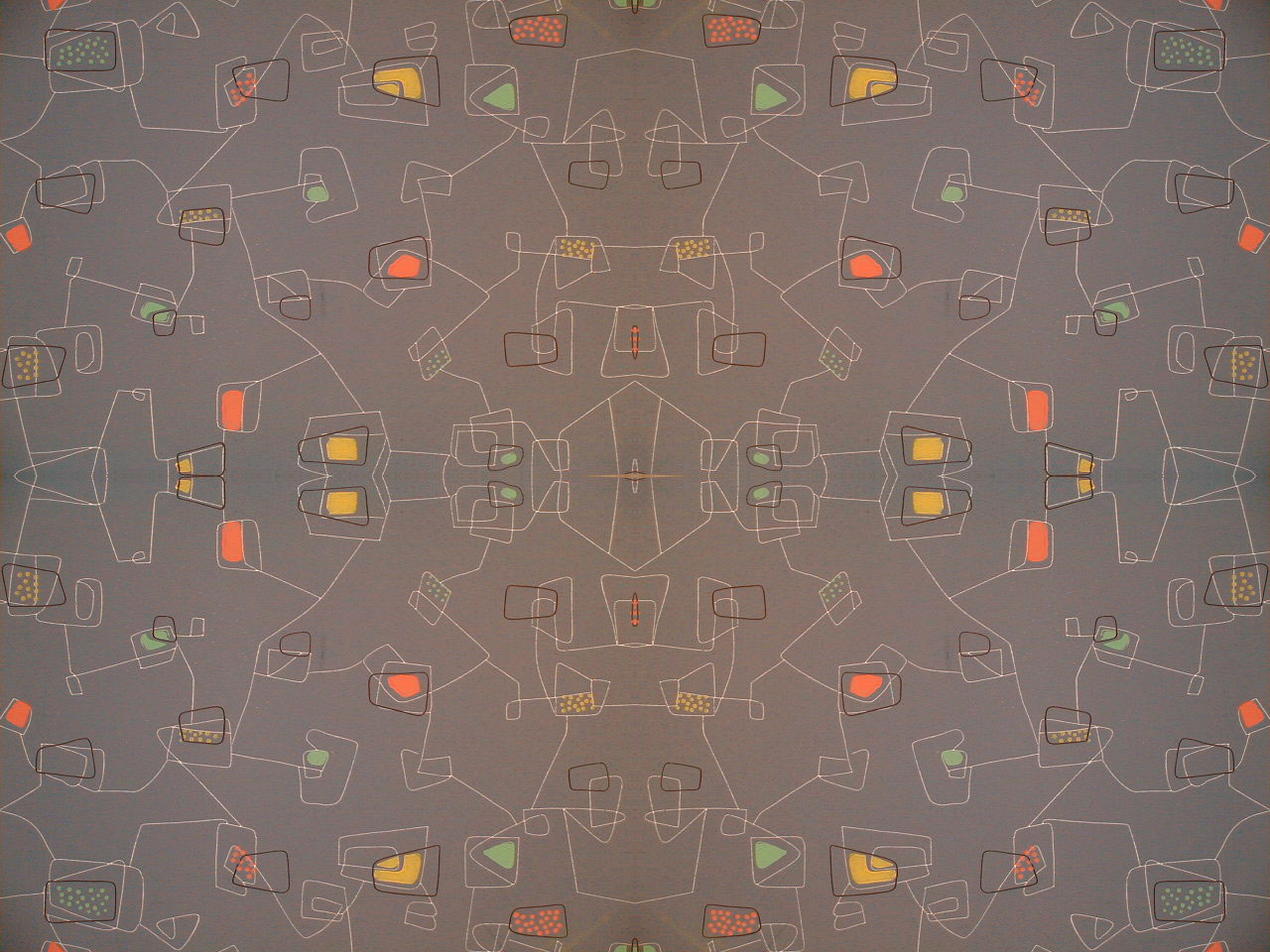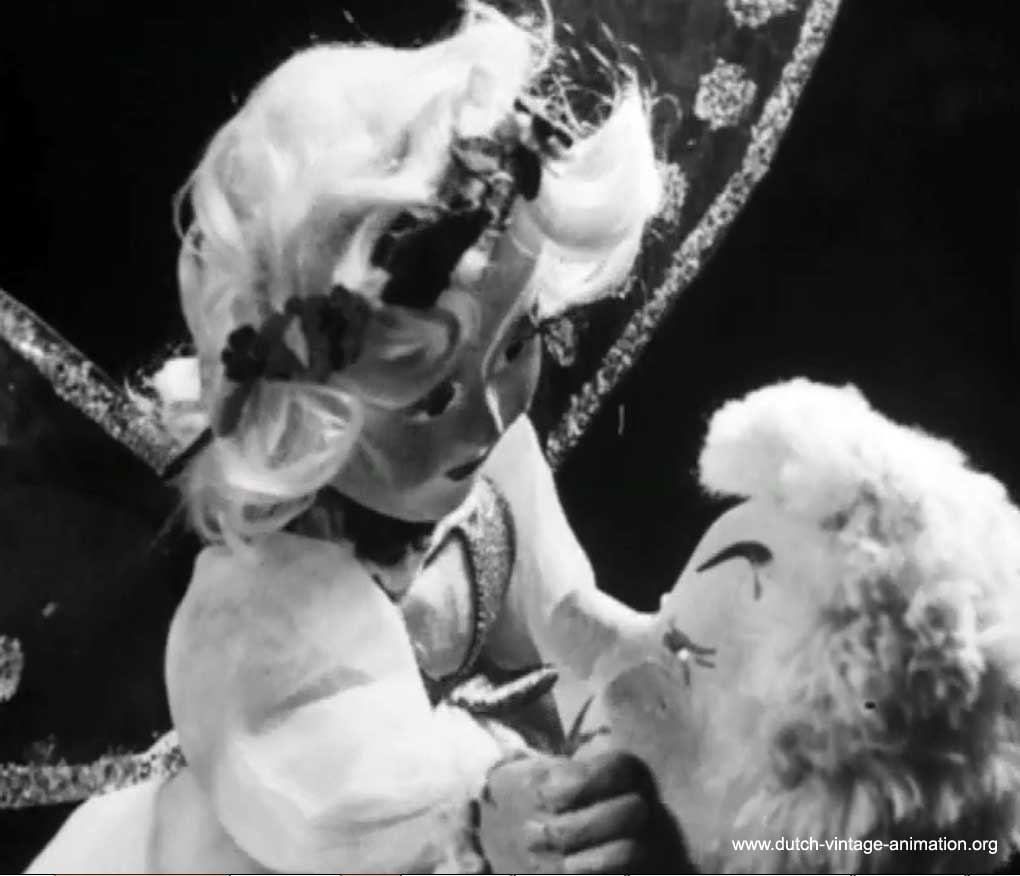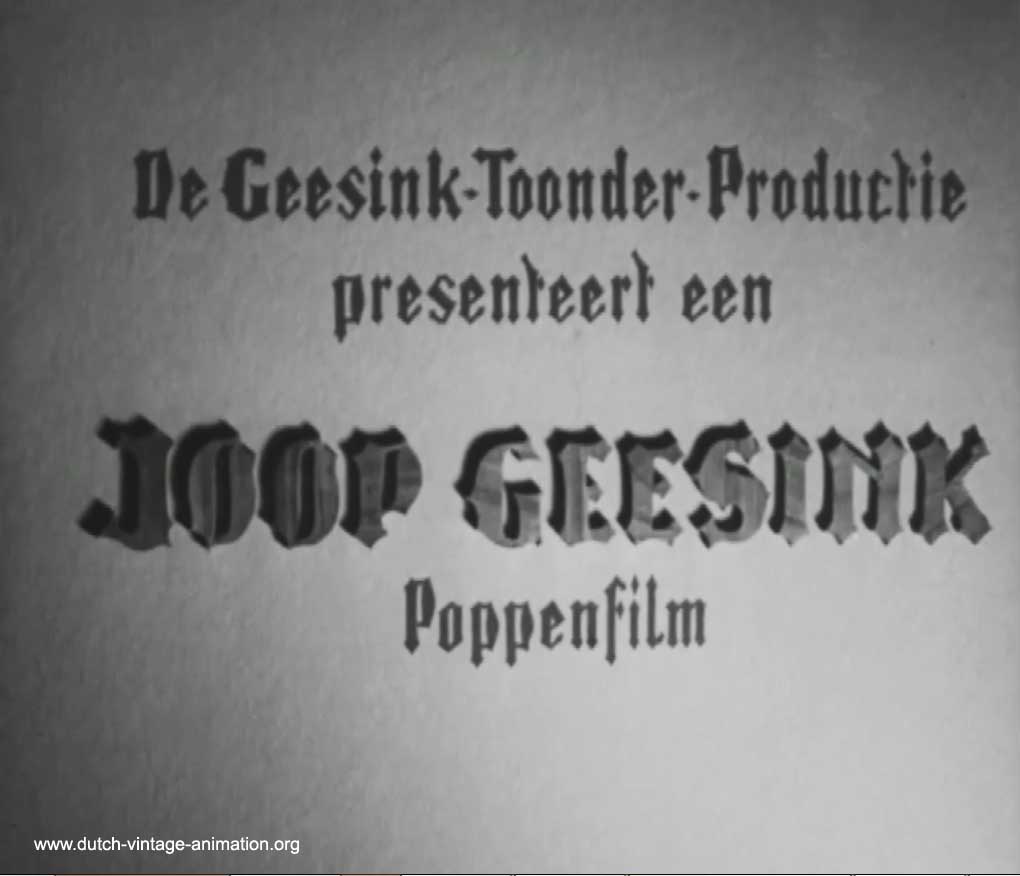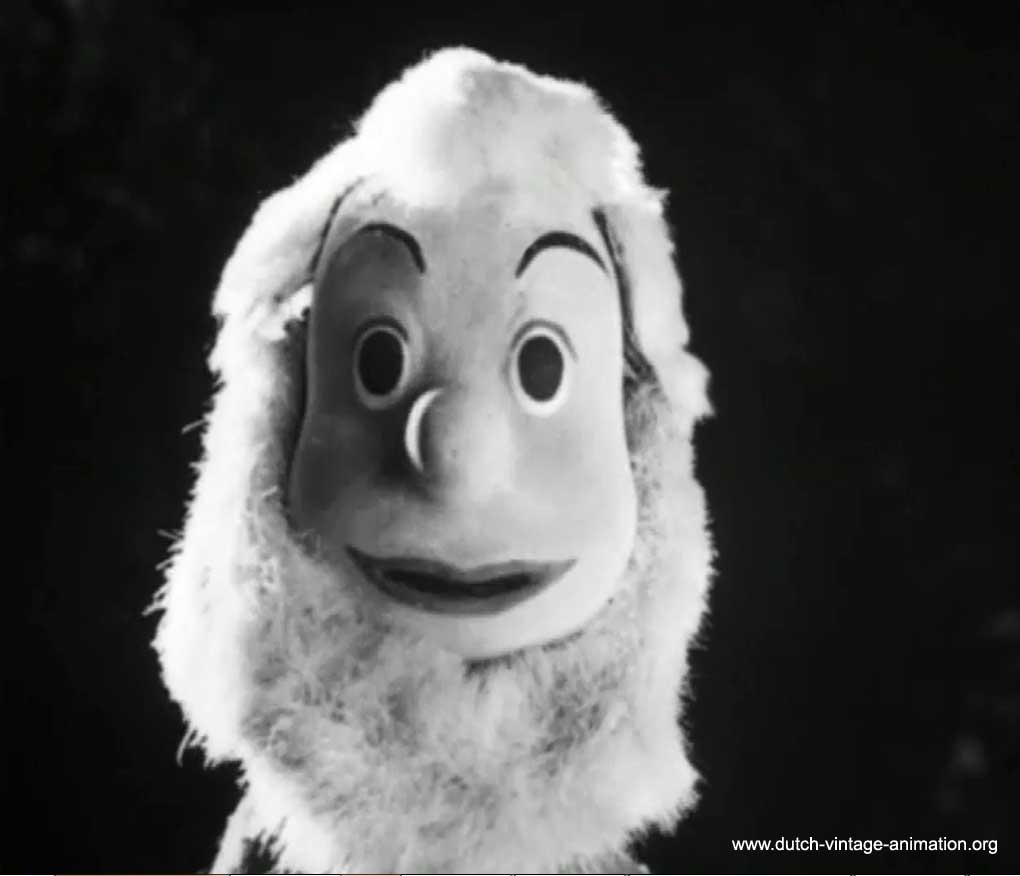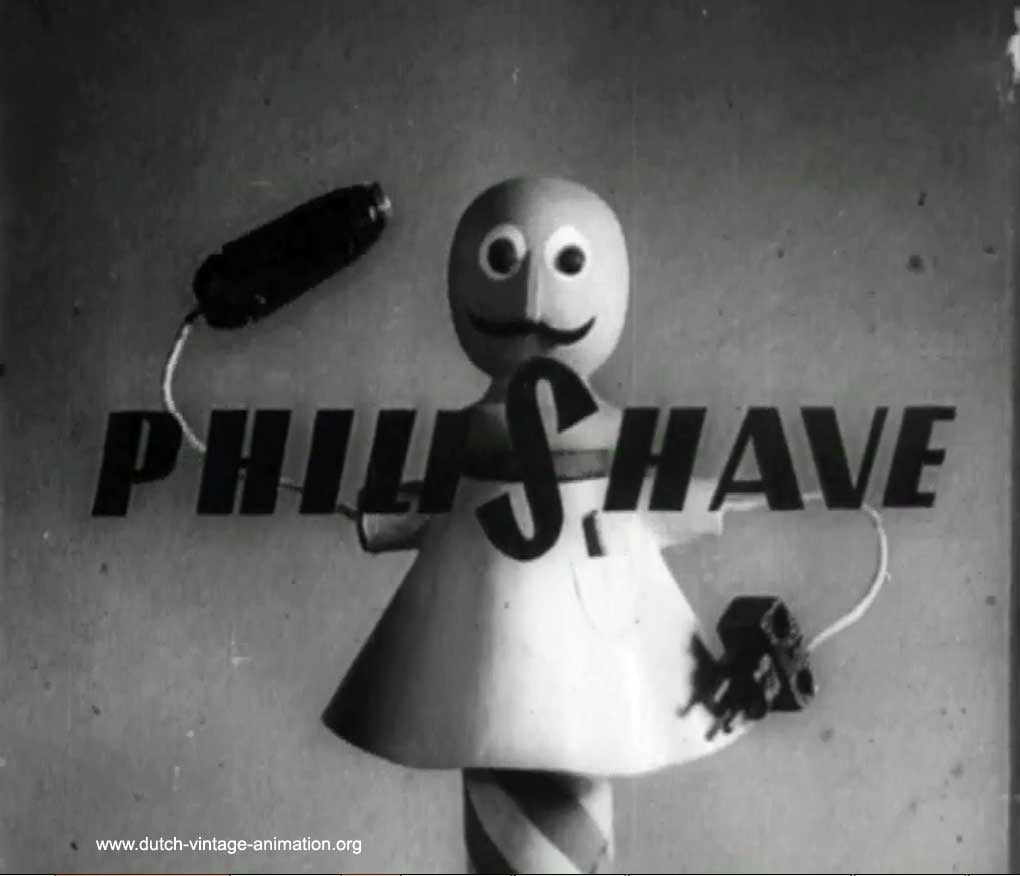The Story
The puppet film Phi-Garo in the Forrest is about a gnome and a fairy who fall in love. The gnome’s bushy beard threatens the couple’s happiness, but a sorceress rescues them with a Philishave.
Trivia
After Serenata Nocturna (1942), this is only the second puppet film that Joop Geesink and Marten Toonder produced as a team. However the opening credits clearly indicate that this is Joop’s production without his business partner Marten; Toonder is only formally represented by the studio name. The brief partnership between the two filmmakers was frequently marked by serious arguments about creative differences. Jan Gerard Toonder, Marten Toonder’s brother, wrote the script.
Awkward
This puppet film doesn’t measure up to any professional standards. The story is wafer thin, camerawork is awkward, the sets are wobbly, the animation is often muddled and unclear. Most student films would look much better nowadays. Having said that, remember that Phi-Garo in the Forest was produced in extremely primitive conditions. Produced in 1943 during the low point of WWll with no resources or supplies to speak of, and power for film lights and the workshop intermittent and unreliable. The occupying Nazi forces controlled everything.
Plane Crash
A serious incident happens when during production a bomber crashes close to the studio. Damage from the crash and the resulting fire forces the crew to quickly find a different location. It’s nothing short of a miracle that the film was even finished under these extreme conditions. It is likely that Philips’ key man Sies Numan considered productions like these an investment in Joop Geesink and his studio, and thought of them as learning opportunities in order to prepare the studio for more serious assignments once the war was over. After this production only a handful of film experiments get completed, but puppet film production is stopped until 1946.
Odd Name
The film title includes the odd name “Phi-Garo”. This was probably thought up by script writer Jan Gerard Toonder who had a penchant for lofty and grand sounding prose. He seemed to enjoy combining the brand name Philips or Philishave with the opera character Figaro from “The Barber of Seville”. Thus, the name “Phi-Garo” is an amalgam of two other shaving-related names. It’s admittedly a little far fetched, but why not allow some language experimentation for an experimental new medium like puppet film?
Credits
| Title: | Phi-Garo in het Woud (Phi-Garo in the Forrest) | |
|---|---|---|
| Client: | Philips | |
| Year of production: | 1943 | |
| Duration: | 5 minutes | |
| Script: | Jan Gerard Toonder | |
| Format: | 35 mm, Black and White |


